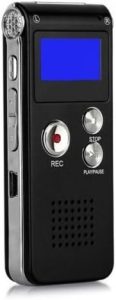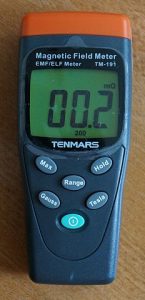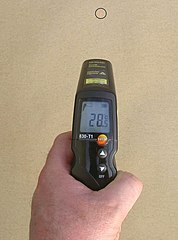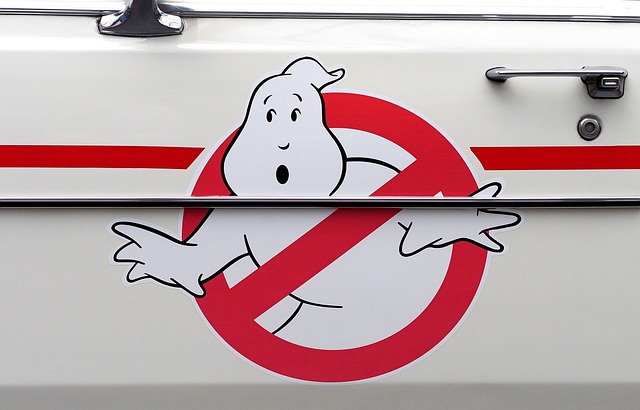 BB writes: “I sometimes watch shows about hauntings and I always wondered about the equipment ghostbusters use to detect the presence of spirits. What is this stuff, and does it really work?”
BB writes: “I sometimes watch shows about hauntings and I always wondered about the equipment ghostbusters use to detect the presence of spirits. What is this stuff, and does it really work?”Great question!
The typical ghostbuster kit, which can run up to $5K or more depending on the quality of the equipment, usually contains items such as EVP recorders, EMF readers, REM Pods and IR thermometers. This equipment definitely works, but does it really prove the presence of spirits?
Before we answer that question, let’s take a quick look at the history of ghostbusting and the origin of some of the fancy equipment we see on popular TV shows today.
Ghost hunting has its origins in the spiritism movement of the nineteenth century which was spearheaded by organizations such as the Society for Psychical Research. This was followed by books such as the 1936 best seller, Confessions of a Ghost-Hunter, written by Harry Price, a psychic researcher who exposed fraudulent mediums, only fed the American appetite for everything spooky.
Fast forward to popular television shows such as One Step Beyond which ran from 1959 to 1961, and In Search Of…, narrated by Leonard Nimoy, which aired from 1977 to 1982 which only fanned the flames. Unsolved Mysteries, which ran from 1987 to 2002, sometimes featured paranormal cases. And who could forget the enormously popular film, Ghostbusters, the 1984 supernatural comedy featuring Dan Akroyd and Bill Murray? By the 2000s, reality television series such as Most Haunted, Ghost Hunters, Ghost Stories and Ghost Adventures were all the rage.
These movies and shows are what introduced paranormal gadgetry to the American public. One of the most significant contributors to this collection was a man named Gary Galka, an electrical engineer who founded D.A.S. Distribution, a company that constructs a variety of meters and lasers for medical and aerospace companies. A portion of his business is dedicated to paranormal research and offers ghostbusting products such as EMF meters and REM Pods.
According to this 2012 article in the Hartfort Courant, Galka became involved in the ghostbusting gadget business after the tragic death of his oldest daughter, Melissa, in a car crash in 2004. Almost immediately after her death, the family began to experience strange happenings in their house which they believed was Melissa trying to communicate with them. “She started doing things like ringing the doorbell, changing TV channels, turning lights on and off. Then one time she came into my room and I felt her sit on the edge of the bed,” Galka told the Courant.
As a result of these experiences, he began to create gadgets which he believed could be used to help people communicate with spirits. After being featured on the Travel Channel’s Ghost Adventures show, Galka’s equipment became very popular.
Now let’s take a look at some of the most popular gadgets in the typical ghostbuster’s toolkit.
EVP Recorder
One of the most common pieces of equipment found in a ghostbusting kit is the Electronic Voice Phenomenon or EVP recorder. These recorders are equipped with microphones that capture ambient or otherwise inaudible communications that ghostbusters believe emits from discarnate beings. These recordings are usually full of static in which listeners claim to hear brief words or phrases such as “Hello” or “I’m here.” Ghostbusters present these recordings as incontrovertible evidence of communication from the other side, but is that true?
Not according to objective experts who have studied these claims, such as Professor Michael Nees, Assistant Professor of Psychology at Lafayette College.
“Recent research in my lab suggested that people don’t agree much about what, if anything, they hear in the EVP sounds – a result readily explained by the fallibility of human perception,” Professor Nees explained, for The Conversation.
He found that even the research conducted on EVP recorders bears some characteristics of pseudoscience.
“In some instances, alleged EVP are the voices of the investigators or interference from radio transmissions – problems that indicate shoddy data collection practices,” Professor Nees explained.
However, he points out that there is other research that suggests there were intelligible sounds captured on EVP recorders under acoustically controlled circumstances. So how do we explain this?
Professor Nees found that “Research in mainstream psychology has shown that people will readily perceive words in strings of nonsensical speech sounds. People’s expectations about what they’re supposed to hear can result in the illusory perception of tones, nature sounds, machine sounds, and even voices when only acoustic white noise – like the sound of a detuned radio – exists. Interpretations of speech in noise – a situation similar to EVP where the alleged voice is difficult to discern – can shift entirely based upon what the listener expects to hear.”
Researchers ultimately concluded that the alleged voices on EVP recorders “are an auditory example of pareidolia – the tendency to perceive human characteristics in meaningless perceptual patterns.”
In other words, it’s all in our imagination.
EMF Meters
The EMF (Electromagnetic Field) meter is probably the most important gadget in the ghostbuster toolkit. It supposedly detects radio/microwaves and changes in electric and magnetic fields in a particular place which they believe indicates the presence of a spiritual entity. However, because so many objects emit this field, everything from lightbulbs to toasters, microwaves to televisions, it’s impossible to make this connection to a ghostly presence.
As the late Victor Stenger, Professor Emeritus of Physics and Astronomy at the University of Hawaii, writes for LiveScience, he once asked Tom Cook, of TomsGadgets.com, a British purveyor of "scientific" paranormal kits for investigators to explain the rationale behind the equipment he sold.
"At a haunted location," Cook said, "strong, erratic fluctuating EMFs are commonly found. It seems these energy fields have some definite connection to the presence of ghosts. The exact nature of that connection is still a mystery. However, the anomalous fields are easy to find. Whenever you locate one, a ghost might be present.... any erratic EMF fluctuations you may detect may indicate ghostly activity."
Notice how he says that a person “may” detect an EMF fluctuation which “may” indicate the presence of a ghost. In other words, as Cook admitted, "there exists no device that can conclusively detect ghosts."
This could explain why author Keith Veronese, writing for Gizmodo, says that using a meter typically used to diagnose problems with electrical wiring or power lines simply can’t be used in this way.
“The association between EMF meters and ghosts is frequently made, but there is no firm evidence connecting the two,” Veronese writes. “Researchers show that high electromagnetic field strength often correlates with personal experiences of hauntings, but that is a measurement of the observer and not a ghostly subject.”
After reviewing the research, he concludes: “As of now, no evidence connects the use of EMF meters for ghost detection, but if you are running around looking for ghosts, concrete evidence is probably not a necessity.”
REM Pods
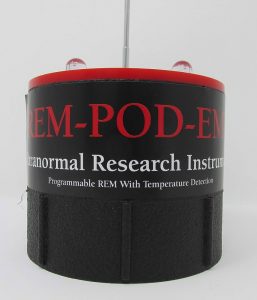 Mustafa Gatollari, a paranormal investigator and author of the article, "I’ve ‘Hunted Ghosts’ for Paranormal TV Shows My Whole Career: Here’s the Tricks They Use to Fool You,” a REM (Radiating electromagneticity) pod is used to detect movement. It’s cylindrical in shape and adorned with blinking lights, a small speaker and an antenna.
Mustafa Gatollari, a paranormal investigator and author of the article, "I’ve ‘Hunted Ghosts’ for Paranormal TV Shows My Whole Career: Here’s the Tricks They Use to Fool You,” a REM (Radiating electromagneticity) pod is used to detect movement. It’s cylindrical in shape and adorned with blinking lights, a small speaker and an antenna.
“If you hover your hand near one, or touch the antenna directly, the device will beep loudly and lights on the pod will shine, indicating where the source of movement originated,” Gatollari writes for the Independent. “Presumably, if there’s a ghost living out its afterlife, strolling through the halls, and it just so happens to brush past one of these pods, it’ll go off. Or, if you ask a ghost you suspect is with you in the room to touch it, and the REM Pod sounds off, boom, you’ve got yourself spirit communication.”
Or so the show goes.
However, as he points out, “These devices are ridiculously sensitive to various radio frequencies and cellular communication. Electronics have been known to set them off as well. So, when you have a production crew — camera ops, sound engineers, bored production assistants tired of listening to people speaking to nothing in the dark on their cellphones, and paranormal investigators equipped with lavalier microphones — it’s impossible to trust any type of REM pod interaction as evidence of paranormal activity.”
IR (Infrared) Thermometers
An infrared thermometer is a hand-held device used to capture invisible infrared energy that is naturally emitted from an object. This infrared energy includes radio waves, ultraviolet light, gamma and X-rays as well as visible light and microwaves. According to ghostbusters, ghosts also emit this energy.
Brian Dunning of Skeptoid, called the IR thermometer “the most blatantly misused of the ghost hunting tools.”
Essentially, they measure the temperature of the object they are pointed at. “They work exactly like your vision, except that they are sensitive to far infrared instead of the visible spectrum. They measure surface temperatures, just like your vision measures surface colors. If you can see something, an IR thermometer can measure its temperature,” Dunning explains.
“However, ghost hunters use these devices to detect what they believe are cold spots in rooms. IR thermometers are not capable of detecting something without a visible surface. In fact, an IR thermometer is even less likely than your vision to see a hazy apparition.”
For example, Dunning describes how firefighters use infrared because it can penetrate smoke. “So if there were a hazy invisible apparition floating in the middle of the room, infrared is perhaps the worst technology to detect it.”
He adds: “Variations of IR readings inside a room are merely showing temperature gradations on the walls, caused by heating and AC, insulation variances, studs, wiring, or pipes behind the wall, radiant heat, recent proximity of another ghost hunter, sunlight, temperatures in adjacent rooms, or countless other causes.”
In other words, an IR thermometer is probably the last gadget a person should use when hunting for ghosts.
Full Spectrum Cameras
Another gadget typically found in these kits is the full spectrum camera which has heat-finding capabilities that are supposedly able to find possible evidence of spirits. They’re also equipped with sensors that enable them to operate in the dark which is when most ghosthunting takes place.
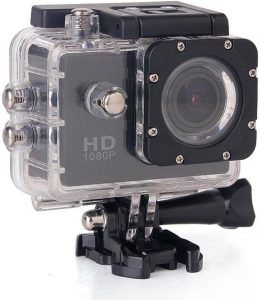 One of the most common images captured on these and other ghostbuster cameras are “orbs of light.” These are likely due to refractions of light on the lens of a camera or specks of dust floating in the air, but paranormal investigators have their own ideas.
One of the most common images captured on these and other ghostbuster cameras are “orbs of light.” These are likely due to refractions of light on the lens of a camera or specks of dust floating in the air, but paranormal investigators have their own ideas.
As this site explains, “Often, they emit their own light, if only a very small amount of light. Whilst orbs are most often thought of as spirits, some believe them to be a separate form of energy that we don’t yet understand, or a manifestation of Native spirits. The truth is, we don’t yet understand orbs, but we know that they appear most commonly in certain places, which means that we can draw some conclusions about what they are and more importantly, what they might mean.”
They go on to offer possible interpretations of the color of the orb. For example, white indicates a soul trapped between on a plane somewhere in the netherworld. Red and orange orbs indicate the presence of warm and protective spirits, such as a ghost who was a mother, teacher or nurse in life. Black orbs are angry spirits (but are not evil, the site insists) and blue orbs are emitted by calming and healing spirits.
According to Dunning, “The usual hypothesis presented by believers is that orbs represent spirits of dead people, though some support variations on that. The science behind this hypothesis is not clear. For example, there are no plausible hypotheses that describe the mechanism by which a person who dies will become a hovering ball of light that appears on film but is invisible to the eye. There are lots of other things that a dead person might become, presumably; and the only reason believers have chosen orbs seems to be that orbs are the most common unexpected objects seen in photographs.”
If there was any good science behind this, he said, “there would at least be some plausible proposals for what the orb might consist of, how and why it is generated by a dead body, why it floats in the air; and also some good predictions about who will become an orb after they die, what size and color that orb would be, and where and when it can be found.” He welcomes any hypothesis on how orbs can be a real phenomenon, but admits he hasn’t been able to find any. “The only evidence is anecdotal reports and, of course, the obligatory photographs, found on the Internet by the thousand.”
The bottom line is that gadgetry used by ghostbusters works very well - when used for the purpose for which it was created - not ghostbusting.
As you may have surmised from the above, ghost busting equipment may sound high tech and scientific but, as Victor Stenger so famously said, “the equipment is only as scientific as the person using it…just as using a calculator doesn’t make you a mathematician, using a scientific instrument doesn’t make you a scientist.”
© All Rights Reserved, Living His Life Abundantly®/Women of Grace® http://www.womenofgrace.com
